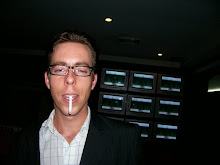Drawing from narratives in several recently read books, I’m beginning
to stitch together pieces of a history of trade and maritime exploration spanning
cultures and continents. My interest so far lies in the routes spreading out
from Europe around America to Japan then on to mainland Asia, India, Africa and
returning to Europe. Initially I would like to build a timeline and commodity
map and then look at culture as an export.
My first window into this world came unexpectedly from a
book called the Golden Spruce, a story and history of the man who cut down a
golden spruce tree in the Haaida Guaai Islands. It is also a story of industrial
greed, environmental protest, mental health, and cultural divides. As part of
setting the context for the story, the author, John Vaillant, takes us on a
Northwest Coast historical journey from the first explorations of Europeans,
and the ensuing trade relations, which arose around the seal hunt, with the
coastal first nations, Japan, China, Russia, Spain and England.
What struck me were the dates and how early on this trade
was thriving. A world trade route
established with the Americas, before the gold rushes, before even the inland
eastern North American fur trade was in full swing.
Shortly thereafter, I was reading a collection of short stories
by Jack London, titled “To Build a Fire” and other stories, stories of the
north, of the gold rush, sled dogs, bitter cold, the hero a lone figure often
of immense inner strength and a true heart.
One of these tales told of a meeting of such men in a northern camp, each
on their own trail, and of a Giant from northern European and his North West
coast First Nations bride. Also with them was a mysterious First Nations man,
but one who tellingly showed in his character the mannerisms of having spent
many years of travel in the company of Europeans. The story then unveils the
history of the three, the Giant, a seal skin trader, and of a First Nations
community to which belonged the mysterious man, then a boy, and the bride, then
a girl about to be married one to the other. It told of the girls numerous
refusals to the marriage proposal, and how the boy had brought greater and more
lavish gifts and heaped upon the shore in front of the girls’ family house
until the proposal was accepted. It then told of the coming of the seal traders
and the wealth they brought and of the girl being taken by the Giant. Many
years passed, and the boy travelled far and wide across the world in search of
his lost bride to be. The Giant and his stolen bride travel on far adventures,
moving across the tropics, the Far East, Africa, through the great and distant
ports of the world. All the while the
Indian boy, now grown, follows their trail, sometimes faint and sometimes
close, until the story catches up with them in this gold rush camp in the far
north of America.
What struck me was the scope, a glimpse into a time of great
exploration, of early booms and busts, of cultures blending in far and harsh
landscapes. It also gives great insight to the nature of human beings and the
things that drive us.

No comments:
Post a Comment